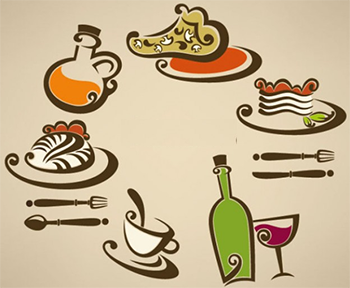 Recipes are usually written in the imperative mood, which is the verb mood that expresses commands. Readers are instructed to ‘Chop onion finely‘ or ‘Dice the carrots‘ when they follow the method of a recipe.
Recipes are usually written in the imperative mood, which is the verb mood that expresses commands. Readers are instructed to ‘Chop onion finely‘ or ‘Dice the carrots‘ when they follow the method of a recipe.
You are, in effect, delivering a sequence of commands. Issuing a series of orders in one long sentence can sound rather imperious. To avoid sounding dictatorial it helps to use concise sentences. It also helps the reader to follow the correct progression of tasks if you break up multiple instructions into separate sentences.
What’s involved in cookery writing?
Cookery writing is a unique skill and one that requires the writer to adopt a slightly different approach to ensure the reader clearly understands their directions. English language students are often set the task of writing recipes as it teaches them to use the imperative mood.
10 Steps for Writing Good Cookery Copy
- The following tips are designed to make your written recipes easier to digest.
- Use short, concise sentences for each action. The style then becomes fluid and to the point.
- Break up long paragraphs into smaller chunks. It’s easier to read text that is well spaced out when you are trying to cook at the same time.
- One paragraph should cover one step, such as mixing ingredients. If the following step is to start cooking, begin a new paragraph.
- List your ingredients in the order they will be used.
- Describe the desired cooking state of the item, such as grated cheese or finely chopped onion, in your list of ingredients. This helps to simplify the text in your method instructions.
- Ensure measurements are written out in full to avoid ambiguity.
- Don’t mix your measures, it can confuse the reader. Use metric or imperial. If you use both, make sure you are consistent with your format throughout, e.g. metric first, followed by imperial in brackets.
- Try to avoid repeating the same words but check the words you do use retain the precise meaning.
- Make sure your descriptions are as accurate as possible.
It’s easy to miss out vital information that may seem obvious to you, especially if you are explaining something you have done many times before.
Ask another person to put your recipe to the test. Don’t give them any help; let the tester raise any points of confusion. Then go back and rewrite those sentences where your intention may not have been fully clear to the reader.
Final Tips
One final point. The above advice may sound rather restrictive, especially to writers who are passionate about their subject. However, it’s essential that your recipe can be clearly understood and accurately performed by the reader.
Once you have that solid foundation you are then free to elaborate. Personal comments, additional tips and cooking anecdotes can be added later on to give your piece extra character and flavor.



